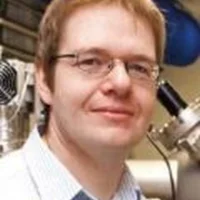One of the challenges in modern research on the fabrication of non-fullerene acceptor based organic solar cells (OSCs) is the availability of very efficient hole transport layers (HTLs). In general, most interface materials for OSCs were originally optimized for fullerene-based systems. This is especially challenging when energy efficient device fabrication concepts like solution-based printing shall be preferred over vacuum processed devices. Solution processed HTLs provide a cost- and resource-efficient approach to OSC fabrication. The challenge herein is the necessity of orthogonal solubility with respect to the active layer materials. As a result, most current high-performance active layer systems are not accompanied by competitive solution processed HTLs.
The most obvious choice for a suitable HTL material is taking the p-type semiconductor from the bulk heterojunction and apply suitable doping. However, this will result in mutual solubility of HTL and at least one part of the BHJ. The new approach published by Xu et al. in Nano Energy introduces the printing of HTLs from suspensions of doped organic nanoparticles in non-toxic alcohols. In the model case, both P3HT and Spiro-OMeTAD have been processed as nanoparticles with doping by various amounts of tris(pentafluorophenyl)borane to yield tailor-made HTLs in combination with various standard BHJs. In all cases significantly increased power conversion efficiencies have been achieved.
A key for superior device performance is a homogeneous distribution of the dopant with the respective doped nanoparticles. The identification of the optimum fabrication process was supported by STXM imaging with total electron yield detection at the F K-edge absorption resonance of the dopant. With respect to proper normalization on sample thickness variations, TEY-STXM yields a high-resolution distribution of the respective material within the first few nanometers of the surface pointing towards the detector. TEY-STXM enabled the detection of doped nanoparticles with significant surface enrichment of the dopant, which also resulted in weak HTL performance. Specimens with a homogeneous dopant distribution showed no contrast in the normalized TEY micrographs (equivalent to no surface enrichment). These nanoparticles were implemented to yield the best devices of this study.
Contacts:
Dr. Andreas Späth
Competence Center Engineering of Advanced Materials
Friedrich-Alexander University Erlangen-Nuremberg
E-Mail: andreas.spaeth@fau.de
Prof. Dr. Rainer Fink
Department of Chemistry and Pharmacy
Friedrich-Alexander University Erlangen-Nuremberg
E-Mail: rainer.fink@fau.de
Original Publication:
Tailoring doped organic nanoparticles as selective hole transporters for printed non-fullerene organic solar cells
Junyi Xu, Andreas Späth, Wolfgang Gruber, Anastasia Barabash, Philipp Stadler, Kirill Gubanov, Mingjian Wu, Karen Forberich, Erdmann Spiecker, Rainer H. Fink, Tobias Unruh, Iain McCulloch, Christoph J. Brabec, Thomas Heumüller
Nano Energy 118(Part B), 108956 (2023)
DOI: 10.1016/j.nanoen.2023.108956

